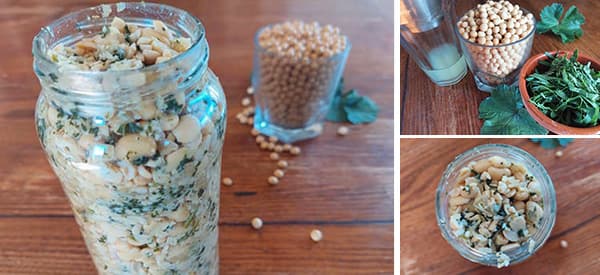
Cleanse Your Bowels With These 2 Ingredients
First of all, if you have regular bowel movements and no gastrointestinal tract conditions, then you don’t need to cleanse your bowels. Evolution has specifically designed our bowels to cope with our body’s waste including bacteria and toxins so most people don’t need to worry about cleansing their bowels.
The only reason for cleansing your bowel is in the following situations:
- Before a colonoscopy
- If you are suffering from constipation
- If you have irritable bowel syndrome
- After a case of diarrhea
- If you suffer from colitis or other bowel diseases
So, if you are suffering from any of the above, then the following remedy can help to keep your bowels healthy, and regular and possibly prevent any future problems.
Fiber and Water Of Course, But What Else?
As long as you are drinking plenty of water and eating fruit and vegetables with a high fiber and water content then your bowels will naturally stay healthy.
But in addition to increasing your fiber and water content, you can also try some home fermentation. There is only a small number of large-scale studies into using prebiotics (found in the non-digestible parts of fiber) and probiotics (found in fermented food) for inflammation of the bowel, with probiotics being more suitable for a broader range of bowel and gastrointestinal inflammation. The good bacteria found in fermented food can protect the mucus lining of your entire gastrointestinal tract, and the fermentation process increases the bioavailability of many beneficial compounds.
⇒ The Fermented Soup – The Long Lasting Soup That Should be In Every Stockpile (Video)
Probiotics such as sauerkraut, kimchi, and natto have the dual benefits of being fermented as well as containing a moderate amount of fiber at about 3%. Of course, you can ferment just about any fruit or vegetable that you have on hand, but research indicates that fermenting soybeans and mallow (Malva spp.) can be particularly beneficial for the bowels.
Mallow (Malva sylvestris) tea was shown in rats to reduce and prevent inflammation caused by colitis. Other mallow species such as Alcea have also been shown to prevent inflammation and ease diarrhea symptoms due to the high concentration of polysaccharides present. Even better, mallow stimulates many of the beneficial bacteria while suppressing a lot of the pathogenic ones in your gut and colon. When fermented, the antioxidant activity of mallow is significantly increased.
Soybeans are high in both fiber (9%) and water. When fermented, the daidzein present in soybeans stimulates your gut flora and makes other compounds become more bioavailable. Fermented soybeans are also an effective treatment for constipation.
Ingredients
- 1 cup of dried soy beans
- ½ a cup of finely sliced mallow leaves
- 1 ½ tablespoons of whey or an appropriate amount of starter culture from a packet
- Optional: salt, pepper, garlic or other flavor enhancers
Method
- This remedy requires a lactic acid fermentation process so does not require any added sugar. You can either purchase a packet of starter culture or you can strain off the whey from any natural yoghurt. The somewhat cloudy liquid whey can be separated from the creamy yoghurt by filtering it through a coffee filter or cheesecloth overnight. One small, individual sized tub of yoghurt will produce about 1 – 2 tablespoons of whey.

- Rinse and soak the soy beans for 24 hours.

- Strain, rinse again and then bring the soy beans to a boil in a pot with plenty of water and then allow to simmer for about 1 ½ hours (you can also add a pinch or two of salt, pepper or some garlic for flavor). Add the mallow and continue to simmer for another 5 minutes or until the beans soften.

- Strain away the water and mash up the beans a little to break their skin and allow it to cool down for 10 minutes or so. Ideally, the beans should be about body temperature when you add the culture or whey.

- Add your lactic starter culture or whey and stir thoroughly.

- Seal the container with a lid and place it in a warm spot for up to a week, during which time you will have to “burp” the container daily to release the gases that build up during the fermentation process. You can test your beans after 3 or 4 days if you prefer a milder taste, otherwise leave them for about 5 – 7 days, at which point, you will notice the “burping” subsiding.

- To stop the fermentation process, simply put the container in the fridge and it’s ready to eat, preferably on top of some brown rice or other wholegrain.

Dosage
If you are new to fermented foods, then 1 large tablespoon added to a dish is a good start. I recommend stirring a tablespoon into some steamed rice with some chili and soy sauce – Delicious! As you get accustomed to the taste and start to experiment a bit, then you can increase the amount to 2 – 3 tablespoons or more if you wish. Or mix in some other fermented foods such as kimchi or pickles to spice up your daily dose.
Since your stomach acid is so destructive, it’s important to dose yourself every day for at least a week, preferably 2 weeks. This will ensure enough good bacteria get past your stomach and into your intestines and eventually through your bowels. This daily dosage will help with any current inflammation of the bowels, whereas a weekly dose should work well as a preventative.
The Plant That Helps Every Part Of The Body At Once (Video)
Homemade Fermented Honey Garlic
Hot Or Cold Water? How It Can Affect Your Digestion
Probiotic Elderflower Kefir Recipe








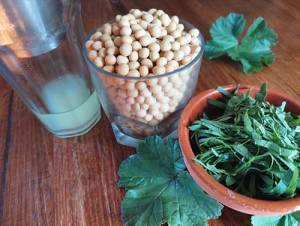
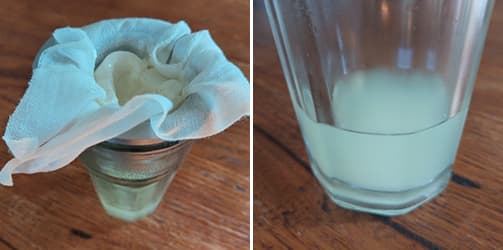
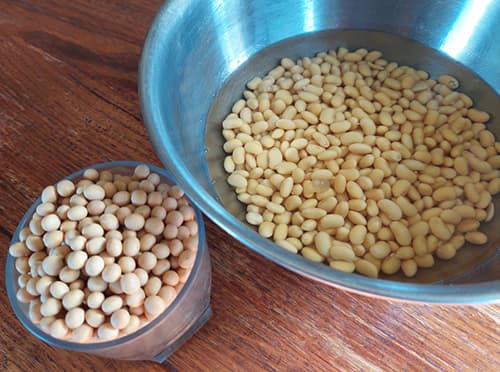
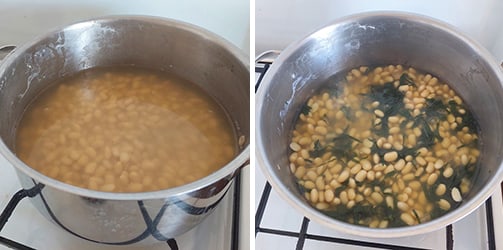
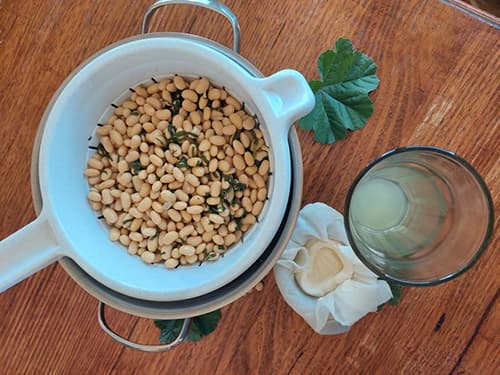
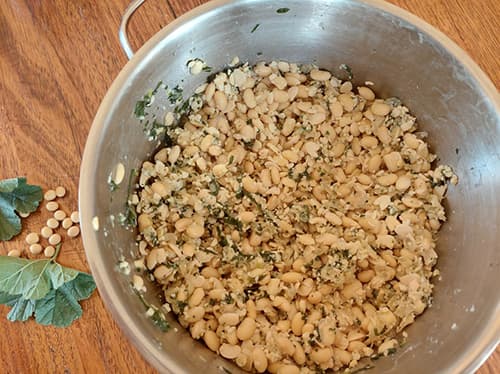
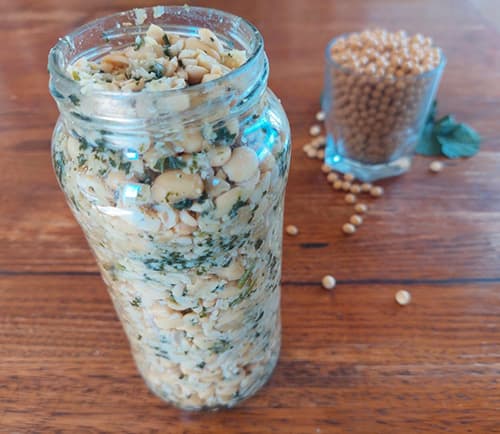
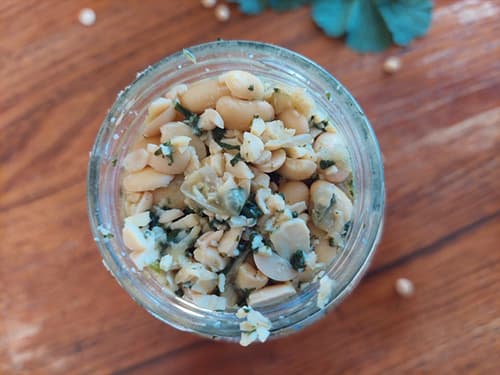


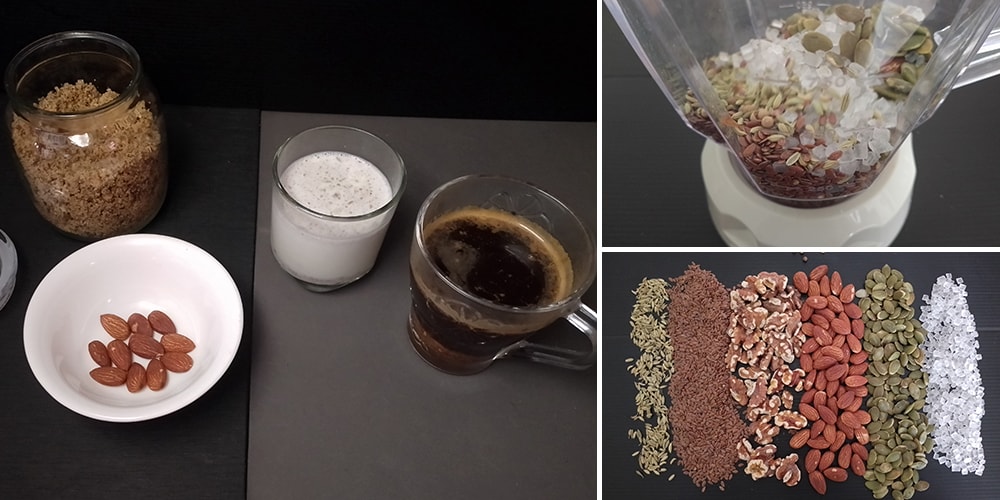
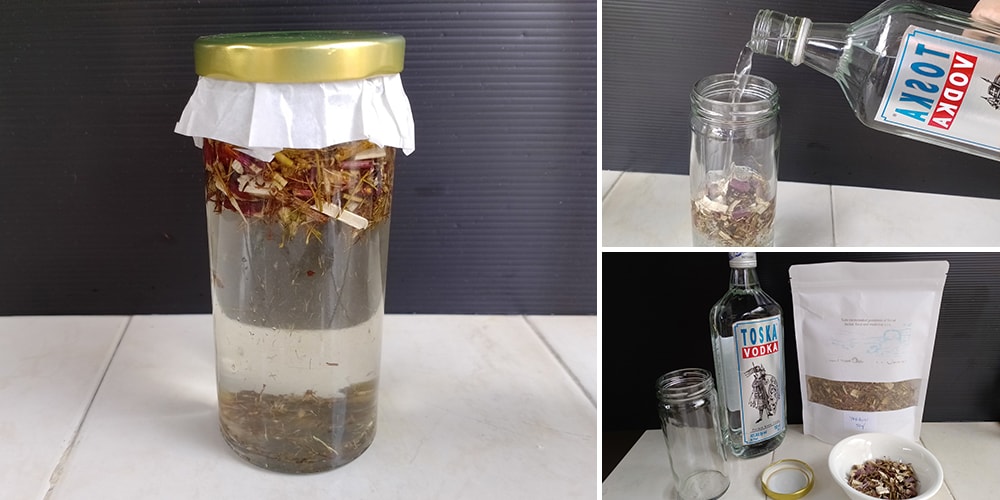
Can you provide links to the research studies of things you claim?
How big is the daily dose? Is a Tbsp enough?
Hello Jennifer,
Thank you for your comment.
You can read the scientific study below to find more detailed information about the benefits of fermented soybeans:
https://www.ncbi.nlm.nih.gov/pmc/articles/PMC8003083/
Many blessings and good health!
What to use if you have fungus AND parasites?
Hello Wanda,
Some of the best antifungal herbs are: oregano, cinnamon, thyme, clove, mint, garlic, echinacea, goldenseal. Tea tree oil, coconut oil, or apple cider vinegar are also useful for fungal infections.
Antiparasitic herbs and natural remedies include: garlic, onion, oregano, ginger, wormwood, grapefruit seed extract, clove, black walnut, probiotic-rich foods, anise, berberine and others.
I also recommend reading our article below:
https://thelostherbs.com/the-super-herb-that-destroys-candida/
Many blessings and good health!
Isn’t Tempeh fermented soybeans. So much easier than making my own.
Hi Kathleen,
Despite being a fermented product, tempeh is often cooked before consumption, and some commercial varieties are also pasteurized, making it unlikely that they would retain the good bacteria known as probiotics. However, tempeh is a great source of fiber, especially the prebiotic kind.
Many blessings and good health!
re fermented soybean recipe: you show green mallow leaves. Do I need to have a plant? An indoor plant? Can dried leaves be used instead? If so what quantity for this recipe. Thank you for the information you give us.
Hello Nancy,
Yes, you can replace fresh mallow with dried mallow. For this recipe, you will need about 8 teaspoons of dried herb.
Many blessings and good health!
You are recommending soy beans, are there other types of beans that can be used in this fermented soup?
Hello Faustine,
Thank you for your question. You can ferment any type of legume you like., including black beans, chickpeas, green beans, or lentils.
Many blessings and good health!
Soy is poison
Hello Minist3r,
Thank you for your comment. Soy in high amounts may alter thyroid function in people who are deficient in iodine. Soy should be avoided by people with an underactive thyroid.
Many blessings and good health!
Soy needs to be organic. Most of the crop is GMO
Unfermented soy is not healthy, I agree (especially in processed foods like “soy protein isolate”). However, fermented soy has been eaten in condiment quantities to no ill effect for thousands of years. The fermentation process removes the “poison”. Natto and Miso are two traditional preparations of fermented soy enjoyed by East Asians since ancient times. Health food stores may have unpasteurized brands for sale that preserve the beneficial microbes.
Can I use leaves from my hybiscus plant for this fermented soy recipe?
Hello Nancy,
Thank you for your question.
Yes, you can use Hibiscus for this recipe. Hibiscus contributes to the normal function of digestive enzymes in the gut, supports regular bowel movements and promotes weight loss.
Many blessings and good health!
What is the daily dose?
Hi Monique,
If you are new to fermented foods, then 1 large tablespoon added to a dish is a good start. As you get accustomed to the taste and start to experiment a bit, then you can increase the amount to 2 – 3 tablespoons or more if you wish. Or mix in some other fermented foods such as kimchi or pickles to spice up your daily dose.
Many blessings and good health!
I have seen where a few have asked the question about a daily consumption dose. I am also wonder what the amount is. I have I missed the answer? If so would you please repost?
Hi Robin,
We apologize for the inconvenience. In the article, no details were given regarding the exact dosage. However, the article has already been updated.
If you are new to fermented foods, then 1 large tablespoon added to a dish is a good start. I recommend stirring a tablespoon into some steamed rice with some chili and soy sauce – Delicious!
As you get accustomed to the taste and start to experiment a bit, then you can increase the amount to 2 – 3 tablespoons or more if you wish. Or mix in some other fermented foods such as kimchi or pickles to spice up your daily dose.
Many blessings and good health!
Hello. Dr. Nicole., I too am wondering what the dose should be. I have constipation and to heal my autoimmune diseases I am using various modalities to detox my body and detox cannot be complete without keeping the bowels moving. I would like to try this therapeutic food and would like to eat the right amount.
Hi Meryl,
Our hearts go out to you for dealing with an autoimmune disease.
If you are new to fermented foods, then 1 large tablespoon added to a dish is a good start. I recommend stirring a tablespoon into some steamed rice with some chili and soy sauce – Delicious! As you get accustomed to the taste and start to experiment a bit, then you can increase the amount to 2 – 3 tablespoons or more if you wish. Or mix in some other fermented foods such as kimchi or pickles to spice up your daily dose.
Many blessings and good health!
I am glad to know that soybeans are not good for those with hypothyroid as I have Hashimoto’s. I make my own kombucha using a variety of herb teas for flavor along with green and black tea. I have recently used rose hips and hibiscus tea and it is delicious. I don’t think it’s helping with constipation. Do you think brewing the tea with only hibiscus and no green and black tea would have a better result? Or instead of commercial tea bags using bulk hibiscus from an organic source. Another idea I would like to run by you is mallow and hibiscus a good combo in kombucha or is kombucha not going to get the results regardless of the recipe? Thanks you so much for sharing your knowledge.
Meryl
I make kombucha, and as I understand it, the organisms need the components of tea, including the caffeine, whether green, black, or white. ( i use a combination of these three because they differ in their benefits). If you don’t use tea, you would probably select for different organisms over time.
I use half caffeinated teas and the other half herb tea for flavor.
Thanks for that info BTW!! 😊
Hi, I was thinking of using this recipe, but noted the Soy has an adverse effect on folks with hypothyroidism. What do you think the effect will be on someone with an ablated Thyroid? I’ve also read that Soy is supposedly good for controlling hot flashes due to menopause. Thoughts?
There is much conflicting information out there! We’ve been recommended by our holistic health doc to start our son on FODMAP diet which says no soy, no fermented food. He’s 15 and has had constant diarreaha issues for years, on and off. I’m very confused